This website uses cookies
This website uses cookies to enable it to function properly and to analyse how the website is used. Please click 'Close' to accept and continue using the website.



Image: Luke O’Donovan ©
British Cooling Towers: Sculptural Giants
Exhibition
Saturday 03 June – Sunday 18 June
In association with fashion brand Margaret Howell, the Twentieth Century Society is pleased to be staging an exhibition exploring the architectural and historic legacy of British cooling towers, as part of the London Festival of Architecture. The exhibition held at the Margaret Howell flagship shop, 34 Wigmore Street, chronicles the silent sculptural beauty of cooling towers, examining the lasting impact they have had on the British landscape and what the immediate future of the last remaining towers could hold.
Photography by Luke O’Donovan and archival imagery sourced from RIBA illustrates the monumental and technical design of the concrete structures, which have become a familiar presence in Britain over the last 60 years. However, today cooling towers face an uncertain future, with all remaining examples due to be decommissioned by 2025 and no protection afforded to them. C20 Society are undertaking a campaign to raise awareness of this immediate threat and the challenges it presents regarding historical recognition. The towers at West Burton A were recently included in our 2023 Risk List of the most threatened twentieth century buildings in the UK.
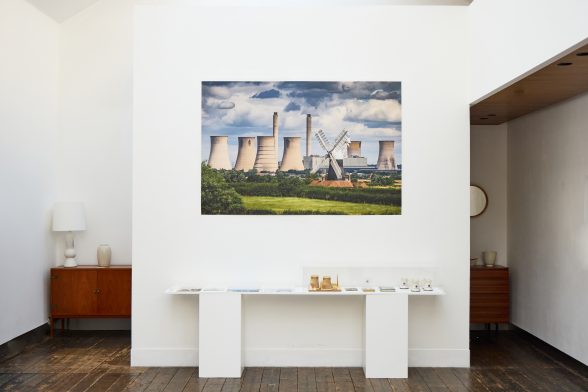
Image: Matt Ford
Alongside the exhibition, a ticketed panel discussion will also be held at the Margaret Howell flagship shop on Wednesday 14 June, chaired by Catherine Croft (Director of C20 Society). Speakers will include Stephanie Macdonald OBE (Founding Director of 6a architects), Dr Otto Saumarez Smith (Architectural Historian), Valeria Carullo (RIBA Curator) and Luke O’Donovan (Architectural Photographer).
The panel will explore various viewpoints on the legacy of the remaining towers and will propose suggestions for repurposing them to initiate wider debate on the country’s post-war industrial heritage. International examples of how disused cooling towers have been imaginatively repurposed, from festival sites to amusement parks, will also make up part of the exhibition.
Due to high demand, this event is now sold out.
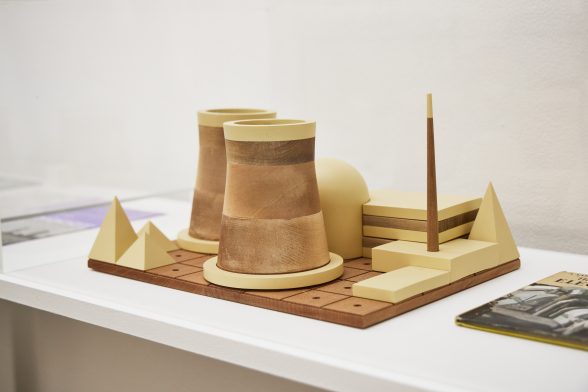
Image: Matt Ford
A brief history
The cooling towers we see today are a product of the nationalisation of the country’s electricity supply in 1948. Ten new coal-fired ‘super power stations’ were developed, generating the electricity that helped fuel the growing affluence of post-war Britain. Deriving their name from their function, cooling towers were designed to cool the high temperature steam that drives the turbines in power stations. Higher than the dome of St Paul’s Cathedral, yet with a concrete hyperbolic structure in some places only seven inches thick, cooling towers are a pure engineering marvel. Due to their monumental size, great consideration was also used to integrate and disguise cooling towers into the countryside, with strategic use of materials, colour and positioning.
Artist Sir Anthony Gormley has admiringly described cooling towers as a ‘Man made volcano…a relic of the carbon age, a memorial to our 200-year-long romance with the second law of thermodynamics’. These modernist megaliths are akin to the Stonehenge or Avebury of the mid twentieth century, yet they exist on borrowed time. In their peak during the mid-1960s, there were around 250 cooling towers across the UK – of these, now only 33 individual towers remain.
Image: Luke O’Donovan ©
Catherine Croft, Director of C20 said:
‘The Twentieth Century Society have been at the forefront of protecting modern heritage for more than 40 years, but saving cooling towers is perhaps our biggest challenge yet. These ‘Sculptural Giants’ have a presence unlike any other structures in the British landscape, yet within just a couple of years all the surviving examples are scheduled to be decommissioned and demolished. This new exhibition celebrates their engineering and artistic bravura, the impact they’ve had on all our lives, and look at how these relics of the carbon age could be sustainably reimagined for the twenty first century.’
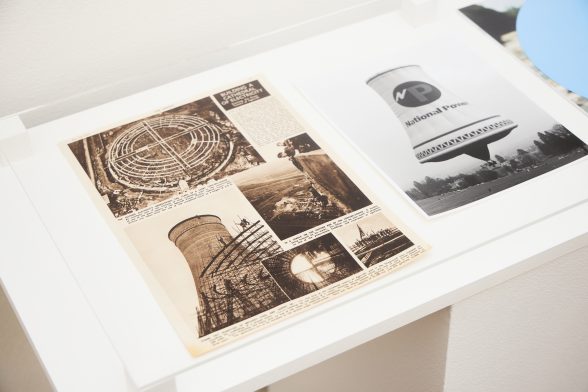
Image: Matt Ford
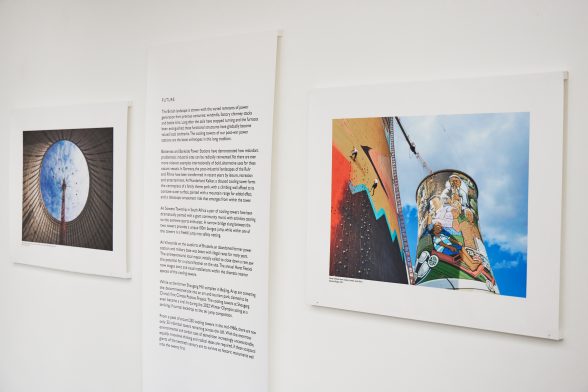
Image: Matt Ford
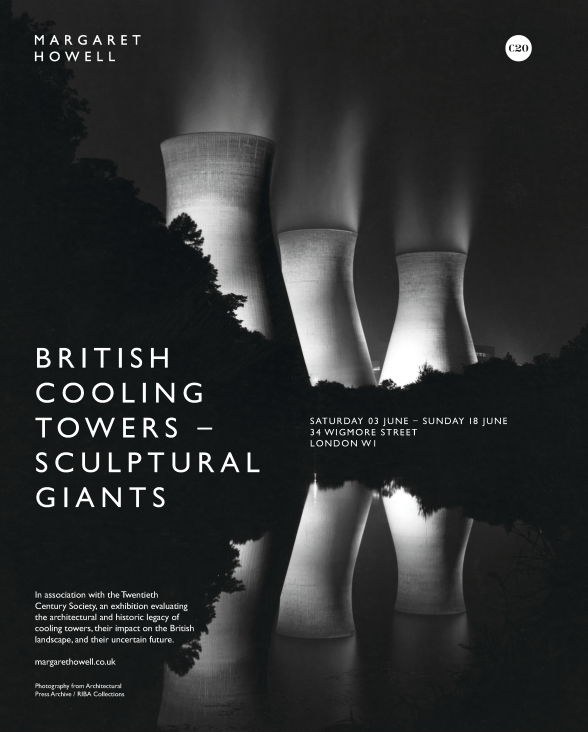
Image: Josephine Reid / RIBA Collections

Become a C20 member today and help save our modern design heritage.